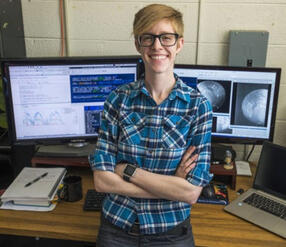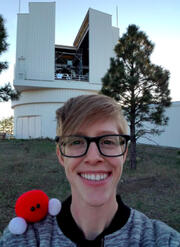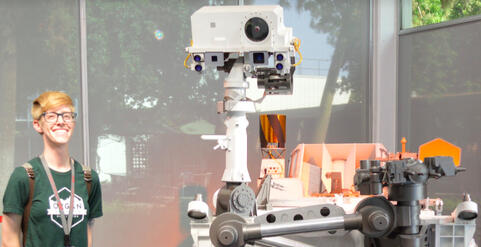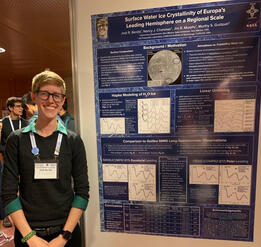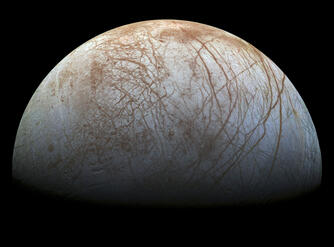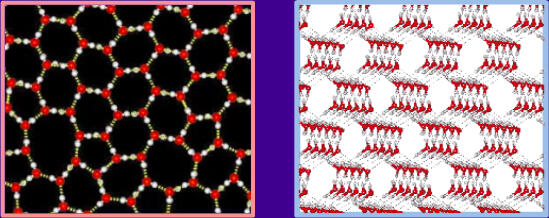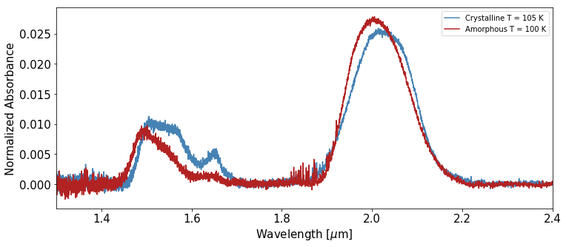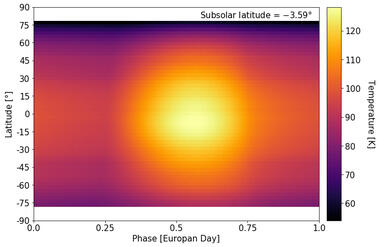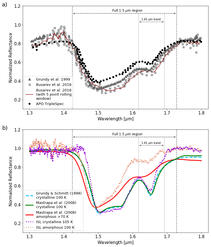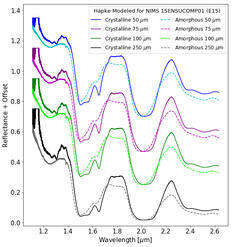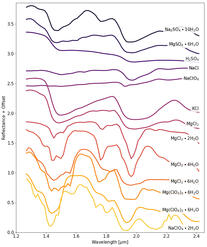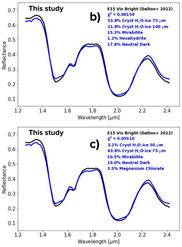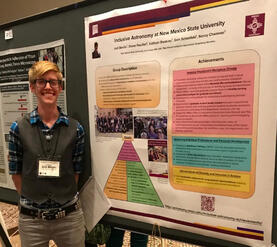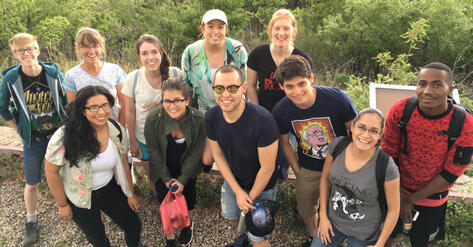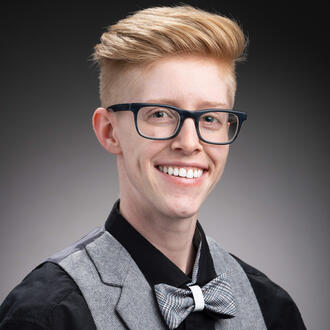
Jodi R. Berdis
APL Profile: https://civspace.jhuapl.edu/people/jodi-berdis
I completed my PhD in Astronomy from New Mexico State University in 2021 and began working at the Johns Hopkins University Applied Physics Laboratory in Laurel, Maryland, shortly thereafter. During my graduate studies, I was a NASA Harriett G. Jenkins Graduate Fellow and conducted part of my research at the Jet Propulsion Laboratory in Pasadena, California. My dissertation research was on the spectroscopic analysis of crystalline and amorphous water ice on Europa in order to determine which processes have been affecting its surface.
At JHU/APL, I am a facilitator for the Surface Power focus group in the Lunar Surface Innovation Consortium (LSIC), dedicated to building collaborations in academia, industry, and government to achieve sustained human presence on the Moon. I am also participating in a mission concept study for a flyby tour of Near-Earth Objects (NEOs) to identify characteristics that may help in developing a future planetary defense threat mitigation mission.
I am particularly interested in equity, diversity, and inclusion initiatives and aim to make astronomy and science more accessible and inclusive.
Research
My dissertation is on the investigation of crystalline and amorphous water ice on Europa. I am analyzing near-infrared spectroscopic data in an effort to constrain the physical processes that currently affect (or have affected in the past) the surface of Europa.
1. Image credit: Caltech/SETI Institute/NASA.
2. Amorphous (left) and crystalline (right) water ice.
3. Crystalline and amorphous water ice (unpublished).
I am using imaging spectroscopy observations from the Galileo Near-Infrared Mapping Spectrometer (NIMS) instrument, ground-based observations from the Apache Point Observatory, and laboratory spectra from the NASA Jet Propulsion Laboratory Ice Spectroscopy Laboratory obtained with my NASA Technical Advisor, Dr. Murthy Gudipati.
I will identify whether the crystallinity (i.e., the content of crystalline water ice compared to the combined content of amorphous and crystalline water ice) that we observe from ground-based spectra differs significantly from the crystallinity we expect to see based on laboratory data, temperature modeling, and radiation flux.
The crystalline-to-amorphous water ice fraction observed on Europa’s leading hemisphere from ground-based observations cannot be reproduced by thermophysical and particle flux modeling alone (Berdis et al. 2020).
1. Thermophysically modeled temperature on Europa (Berdis et al. 2020).
2. Ground- and lab- based observations (Berdis et al. 2020).
In order to probe the source of this discrepancy, I am currently assessing the surface composition and the crystallinity of specific regions-of-interest (such as lineae, pits and domes, and chaos terrain) on Europa’s leading hemisphere using Galileo NIMS hyperspectral image cubes. I plan to speculate upon the origin of these features based on their crystallinities, and evaluate their surface emplacement into our understanding of Europa’s leading hemisphere surface history and crystallinity.
1. Hapke-modeled spectra of water ice (unpublished).
2. 13 salts/brines used in spectral mixture analysis (unpublished).
3. Preliminary results from spectral mixture analysis.
Equity, Diversity & Inclusion
I am dedicated to diversity and inclusion initiatives which improve quality-of-life in the workplace, and I focus on communicating science and astronomy to the general public, specifically adolescents and those belonging to underrepresented minority groups. Here's just a few things I've been involved in (CV for more details):
AAS DPS Professional Culture & Climate Subcommittee Member
Co-Host of 'Out In Space' Podcast
Group Facilitator for NMSU Inclusive Astronomy
Outreach Coordinator for NMSU Astronomy Department
Co-Deputy Coordinator for Summer Interns/Fellows for JPL's "Spectrum" (LGBT+ Employee Resource Group)
Program Assistant / Boot Camp Co-coordinator for Sloan Digital Sky Survey (SDSS) Research Experience for Undergraduates (REU)
Contact
Email: [email protected]
